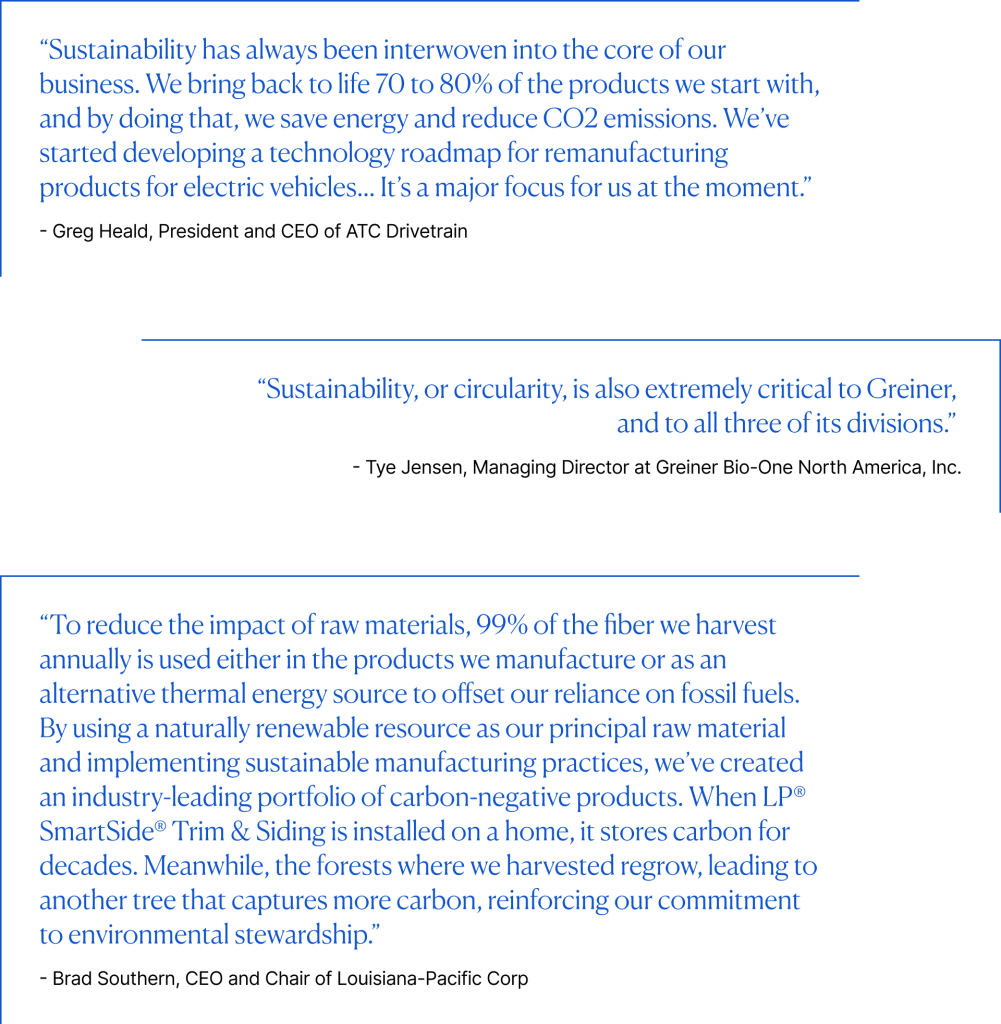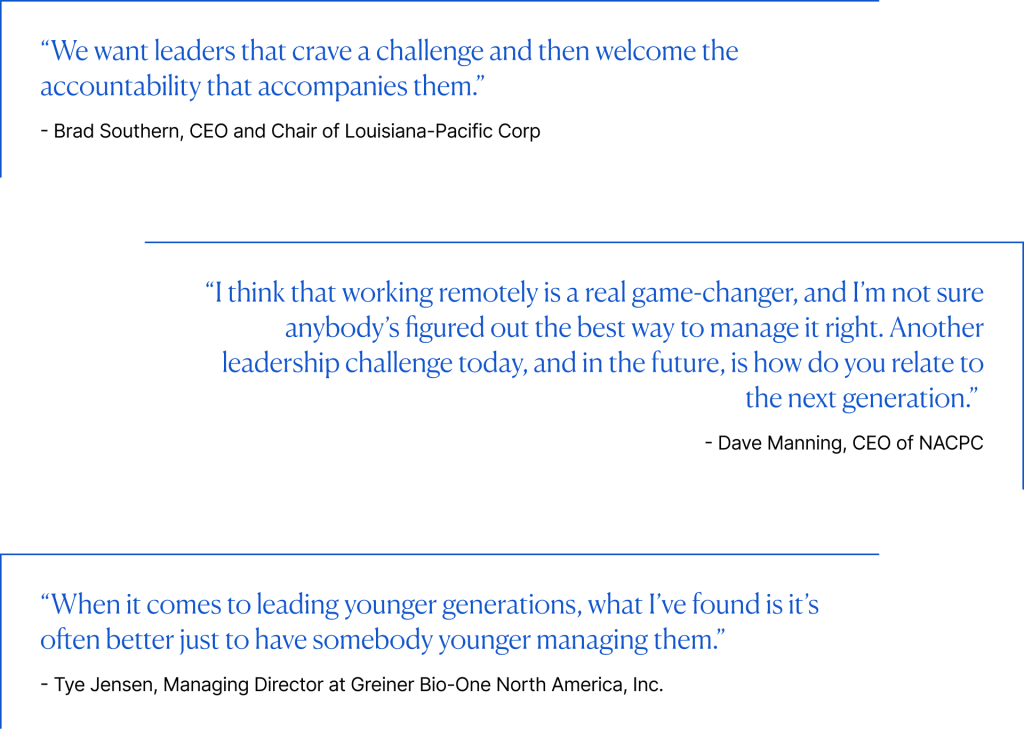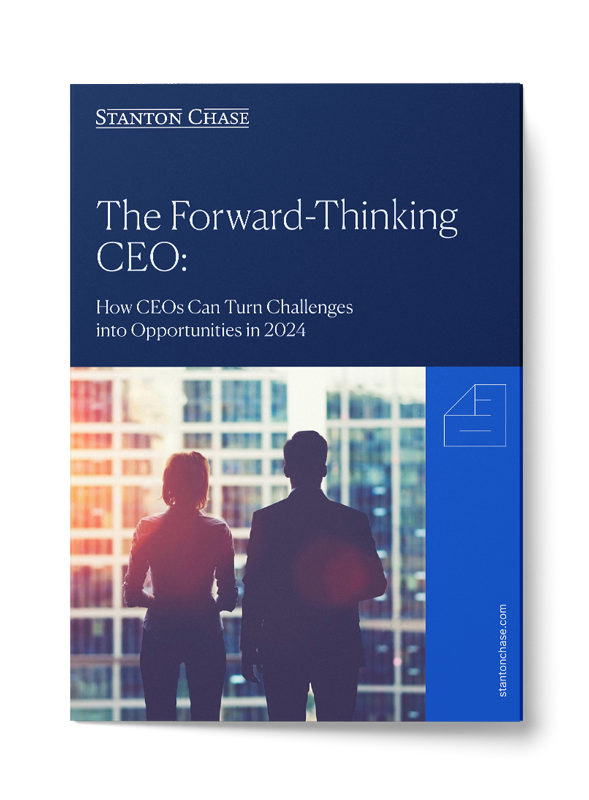
2024 is set to be a year of opportunities and challenges for businesses worldwide.
To get a better picture of the year ahead, we spoke with a seasoned group of leaders from industries as diverse as biotech and logistics, all of whom understand the weight of decision-making that rests on a CEO’s shoulders.
These candid conversations with key players from the USA, Germany, and Korea offer insights that CEOs need to succeed in 2024.
Challenge #1: Economic Ambiguity and Adaptation
A shark that stops swimming dies, just like a business that ceases to adapt. Similar to our finned friends, businesses must constantly move forward, hunting for their next breakthrough. This is especially true when the metaphorical prey becomes increasingly elusive, owing to the murkiness of economic uncertainty tainting the waters.
The World Economic Forum anticipates a further slowdown in global economic growth for 2024, forecasting a dip to a mere 2.6% from 2.9% this year, influenced by soaring interest rates, rising energy costs, and a deceleration in the world’s leading two economies.
In the face of these challenges, adaptation becomes more important than ever. To shield themselves from the volatile tides of economic instability, organizations should consider:
- Diversifying offerings and entering new markets to spread risk and open up additional revenue streams.
- Leveraging technology to improve operational efficiency and reduce costs in a way that enables them to remain competitive, even when the economic climate is tough.
- Optimizing product and service portfolios to focus on core offerings that generate the most revenue, while cutting back on less profitable or non-essential items.

Challenge #2: Sustainability, ESG, and Innovation
There are two things cash and sustainability have in common: they’re both green, and they’re both aspects businesses will continue to be concerned about in 2024.
Our 2023 ESG survey revealed that 79% of businesses in the natural resources, energy, and mining sector had already implemented ESG initiatives. Similar trends can be seen across sectors and industries; 90% of S&P 500 companies, 70% of Russell 1000 companies, and 81% of all companies, regardless of sector, have put ESG initiatives into action.
And the corporate focus on sustainability for 2024? It’s shaping up to be a line graph resembling the steepest hill you’ve ever had to scale. It’s becoming ever more daunting, and the companies sprinting toward the summit are compelling those not yet in the race to start hustling to keep pace, as an ever-growing number of consumers demand sustainable products.
In 2024, meeting sustainability expectations will present a challenge; but the innovation spurred by this challenge will also present opportunities. To turn sustainability into an innovation opportunity in the coming year, CEOs should consider:
- Investing in R&D to create sustainable products and services that not only meet but exceed market expectations and regulatory standards.
- Transitioning toward a circular economy where products are designed for reuse, repair, and recycling, thus reducing waste and conserving resources.
- Using technologies such as AI and data analytics to optimize resource efficiency and reduce the environmental footprint of business operations.

Challenge #3: Supply Chain and Market Dynamics
Do you remember the Suez Canal blockage of 2021? Anyone involved in imports or exports using that passage surely hasn’t forgotten. And just before that incident, we had COVID-19, which threw the transportation of goods and materials across continents into disarray.
As we step into 2024, CEOs continue to grapple with supply chain disruptions. But these challenges also present opportunities for restructuring and re-engineering supply chains.
According to our 2023 ESG Survey, many businesses are aware of the need for supply chain reform. Forty-three percent of those surveyed highlighted supply chain optimization or re-engineering as a key focus, while thirty-six percent disclosed plans to nearshore or reshore their supply chain to reduce risk.
This ongoing commitment to fortifying supply chain resilience is expected to stretch into 2024—especially as companies adopt a “not if, but when” approach to risk management concerning supply chain disruptions. To further safeguard their supply chains, CEOs might want to consider:
- Avoiding reliance on a single source by establishing relationships with multiple suppliers in different locations.
- Establishing local production capabilities to serve regional markets and reduce dependence on long-distance shipping.
- Preparing contingency plans for potential supply chain breakdowns to accelerate recovery efforts.

Challenge #4: Leadership and the Workplace
Leadership will always be both a challenge and an opportunity—whether it’s 2024, 1624, or even the year 3024. But the leadership challenges in 2024 will be distinctly characterized by the unique demands of the times. A key change in 2024 is the generational shift. For the first time in history, we’ll see more individuals from Generation Z in the workforce than Baby Boomers.
Gen Z ushers in new considerations regarding the effective management of this emergent cohort. However, they also introduce a workforce that is intrinsically purpose-driven, technologically adept, and earnestly committed to sustainability.
But there’s another layer to this evolving landscape: the shifting preferences across all generations regarding how they engage with work and their perceptions of the workplace. In 2023, 12.7% of full-time employees worked from home, with 28.2% in a hybrid model, and these numbers are poised to swell in 2024. Given that 98% of workers express the desire to work remotely at least part-time, and 16% of companies already operate fully remotely, this upward trajectory is expected to persist.
As we confront leadership challenges in 2024, CEOs should consider the following:
- Developing policies that not only accommodate but benefit from remote and hybrid work structures.
- Creating environments where Gen Z and all other generations feel valued and understood.
- Tailoring leadership programs to prepare managers and executives for leading younger, diverse, remote, and distributed teams effectively.

Challenge #5: Diversity, Equity, Inclusion, and Belonging
Necessity might be the mother of invention, but in 2024, diversity will be the mother of innovation. In the year ahead, workplaces will need to continue working on their diversity, equity, inclusion, and belonging (DEIB) initiatives.
Organizations with over 30% female executives outperform others, with a 48% likelihood of better performance, and ethnically diverse companies in the top quartile outperform bottom quartile firms by 36% in terms of profitability.
But direct profits aren’t the only thing DEIB helps to improve. Organizations with diverse suppliers enjoy a 30% higher procurement return on investment and companies embracing diversity are 70% likelier to capture new markets. Diversity will also be critical for your talent strategy.
For 83% of Millennials, working at an inclusive company increases engagement, and 75% of Gen Z would hesitate before applying for a position at a company they believed didn’t invest enough in DEIB.
To improve their organizations’ DEIB in 2024, CEOs should:
- Establish quantifiable targets for increasing diversity in leadership roles and across the organization.
- Actively seek out and partner with diverse suppliers to leverage the associated 30% higher procurement ROI and to stimulate innovation.
- Develop a compelling employer brand that emphasizes the organization’s commitment to DEIB to attract and retain Millennial and Gen Z talent.

Challenge #6: Labor Shortages and Automation
Baby Boomers are stepping into retirement, and in many developed nations, the bench isn’t deep enough to fill the void. The consequence is a contracting workforce and labor shortages. This scenario isn’t just unfolding across Europe and North America; it’s a tale mirrored in parts of Asia too, notably in countries like Korea and Japan.
And if that weren’t enough, many of these nations are experiencing declining birthrates, setting the stage for a protracted challenge.
This phenomenon isn’t exclusive to developed nations either. Developing countries are grappling with the ‘brain drain’ effect, as their most skilled workers are siphoned off by talent-hungry developed nations, leaving a vacuum in their wake.
To put it succinctly, we’re staring down the barrel of a global conundrum. But there is a silver lining; a chance for businesses hard-pressed for human capital to pivot toward automation and artificial intelligence. This technological pivot isn’t merely a stop-gap measure but a golden opportunity. To seize it, CEOs should consider:
- Integrating robotics for routine and labor-intensive tasks, reducing the dependency on a shrinking workforce.
- Leveraging AI to handle data-heavy tasks, improving efficiency and allowing human talent to focus on creative and strategic roles.
- Offering training programs to help current employees work alongside new technologies and fill emerging roles.

Challenge #7: Raw Material Costs and Product Development
Inflation, soaring labor expenses, escalating energy prices, mounting packaging costs, the expense of mitigating CO2 emissions, surging gas and fuel rates, along with the cost of adhering to compliance and regulatory requirements… No, we’re not reciting a catalog of concerns for 2024. Rather, these are the underlying factors contributing to what will likely keep raw material costs on the higher end in 2024.
This reality means that CEOs in 2024 will grapple with the hurdle of inflated costs for raw materials. But hidden in this challenge is the potential for ingenuity—opportunities to create products with less dependence on costly raw materials, and to build better relationships with suppliers to secure more favorable price points.
CEOs are tasked with addressing the inevitability of mounting raw material costs directly, employing tactics to soften the financial blow. We propose that CEOs should consider:
- Broadening their network of suppliers to ensure more stable access to raw materials and competitive prices
- Adopting just-in-time inventory practices to reduce holding costs and minimize the risk associated with price fluctuations of raw materials
- Renegotiating contracts and seeking new pricing agreements with suppliers to manage expenses more effectively

CEOs Can Turn Challenges into Opportunities in 2024
Even in years when the odds seem stacked against businesses and their executives, good leaders can find the opportunity in every challenge. When leaders meet challenges head-on, they’re not just building solutions; they’re building their resilience and self-confidence.
At Stanton Chase, we’ve been helping our clients find exceptional leaders for more than 30 years. If leadership is your top challenge in 2024, reach out to us, and we’ll help you turn it into your top opportunity.
About the Authors
Daniel Casteel is the Global Functional Leader for CEO Search and Succession and Managing Partner of Stanton Chase Nashville. He is a veteran global executive who leverages his extensive experience in building executive leadership teams across diverse industries and geographies for the benefit of his clients. Daniel founded Stanton Chase Nashville in 2005 and has since established a top-caliber team in Georgia, Alabama, and Tennessee that brings great depth of industry expertise and business acumen to deliver outstanding leadership solutions for clients.
Petra Gerstner-Eilers is a Managing Director at Stanton Chase Frankfurt. Petra joined the executive search sector in 1992. She spent many years with a top 10 executive search firm in Munich; thereafter, she built and developed an executive search department for a Dutch management consulting firm in Germany. Petra joined Stanton Chase Frankfurt in September 2010.
Tony Kang is a Managing Director at Stanton Chase Seoul and serves as Stanton Chase’s Regional Vice President for the Asia Pacific (APAC) region. Tony has over 23 years of experience working for various leading multinational pharmaceutical, medical device, and optical companies in Korea and the United States. Before entering the executive search industry, Tony held senior marketing positions at Eli Lilly in the US. He then served as General Manager for companies such as Allergan Korea, Biopol Korea, and Carl Zeiss Vision Korea.
How Can We Help?
At Stanton Chase, we're more than just an executive search and leadership consulting firm. We're your partner in leadership.
Our approach is different. We believe in customized and personal executive search, executive assessment, board services, succession planning, and leadership onboarding support.
We believe in your potential to achieve greatness and we'll do everything we can to help you get there.
View All Services


